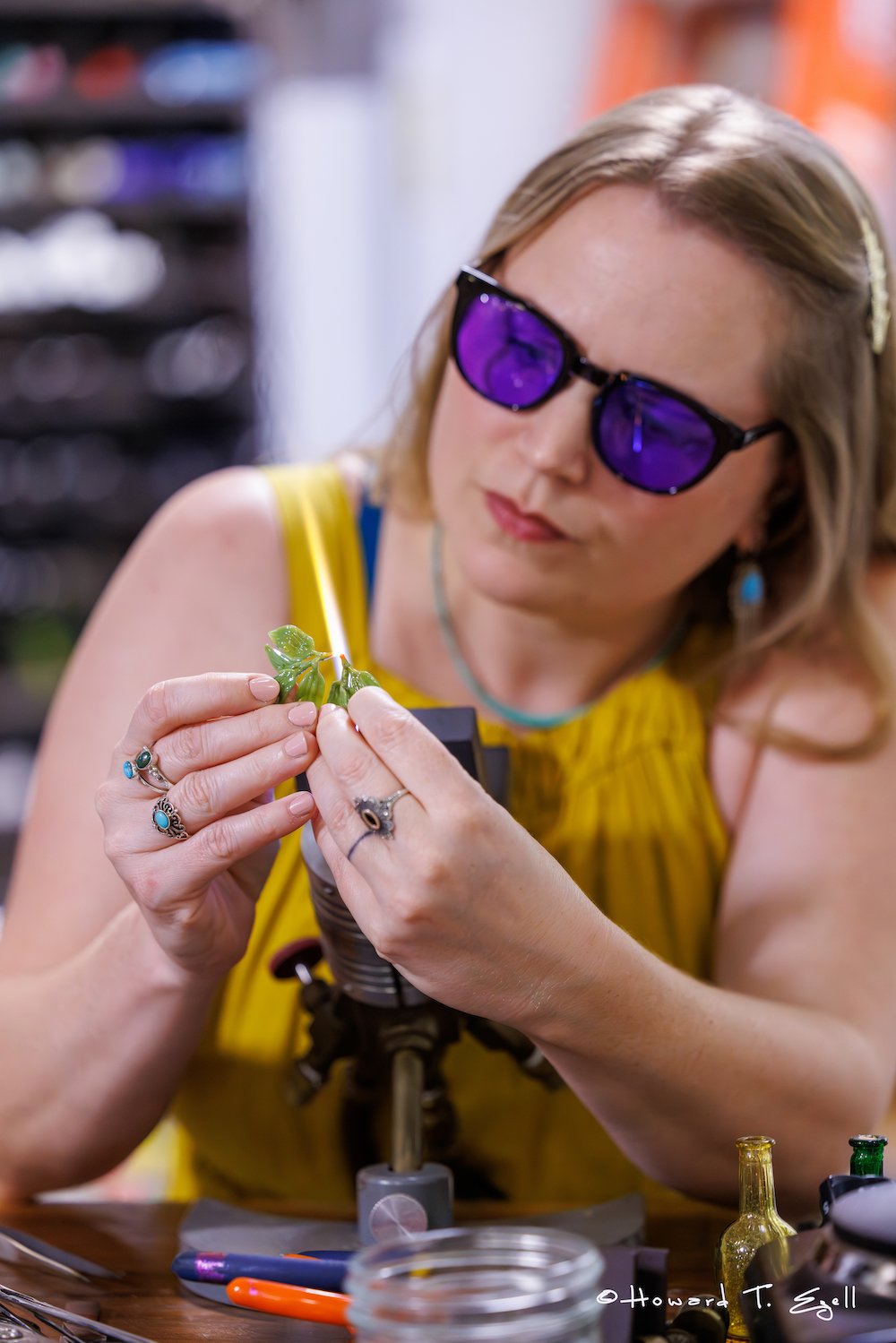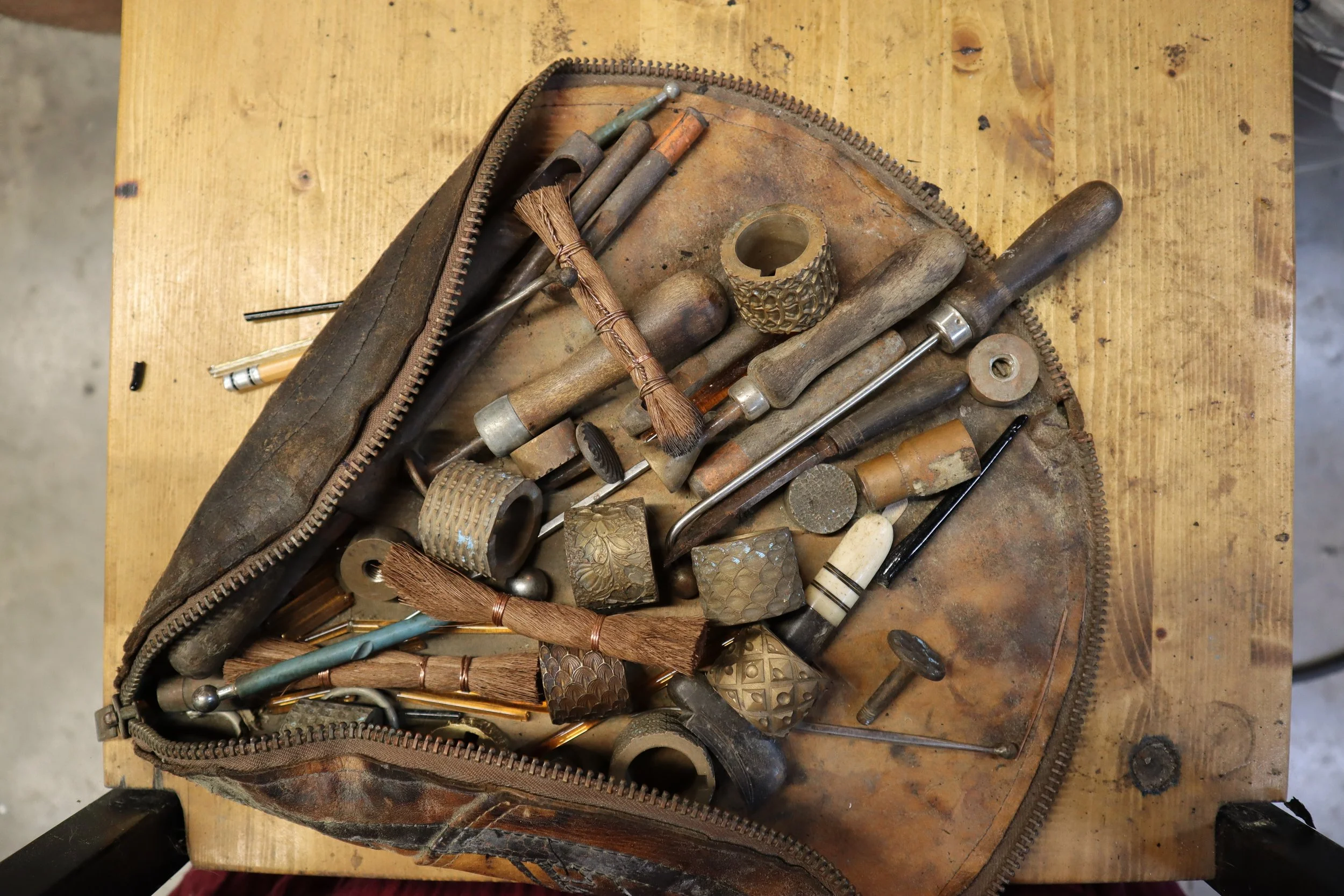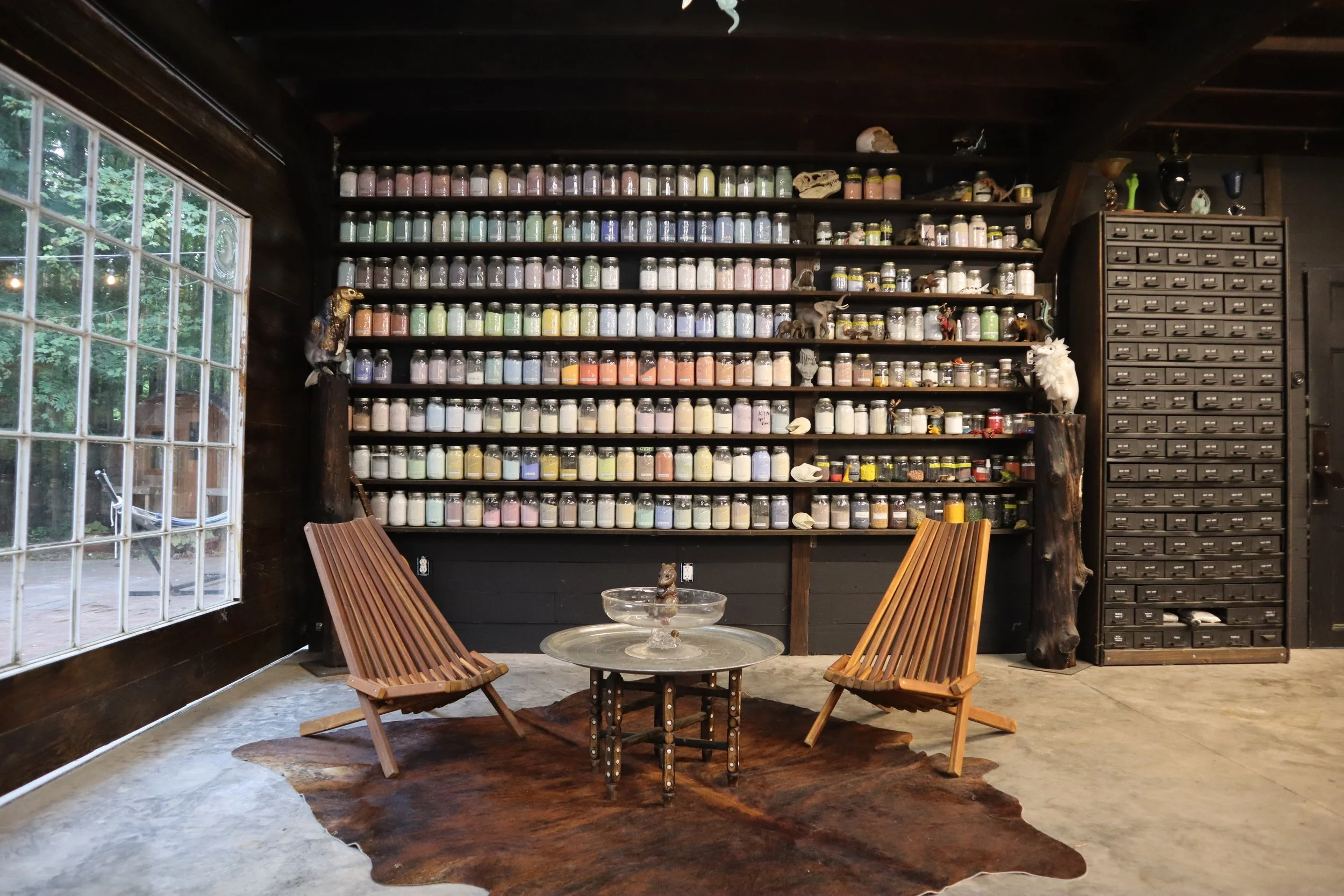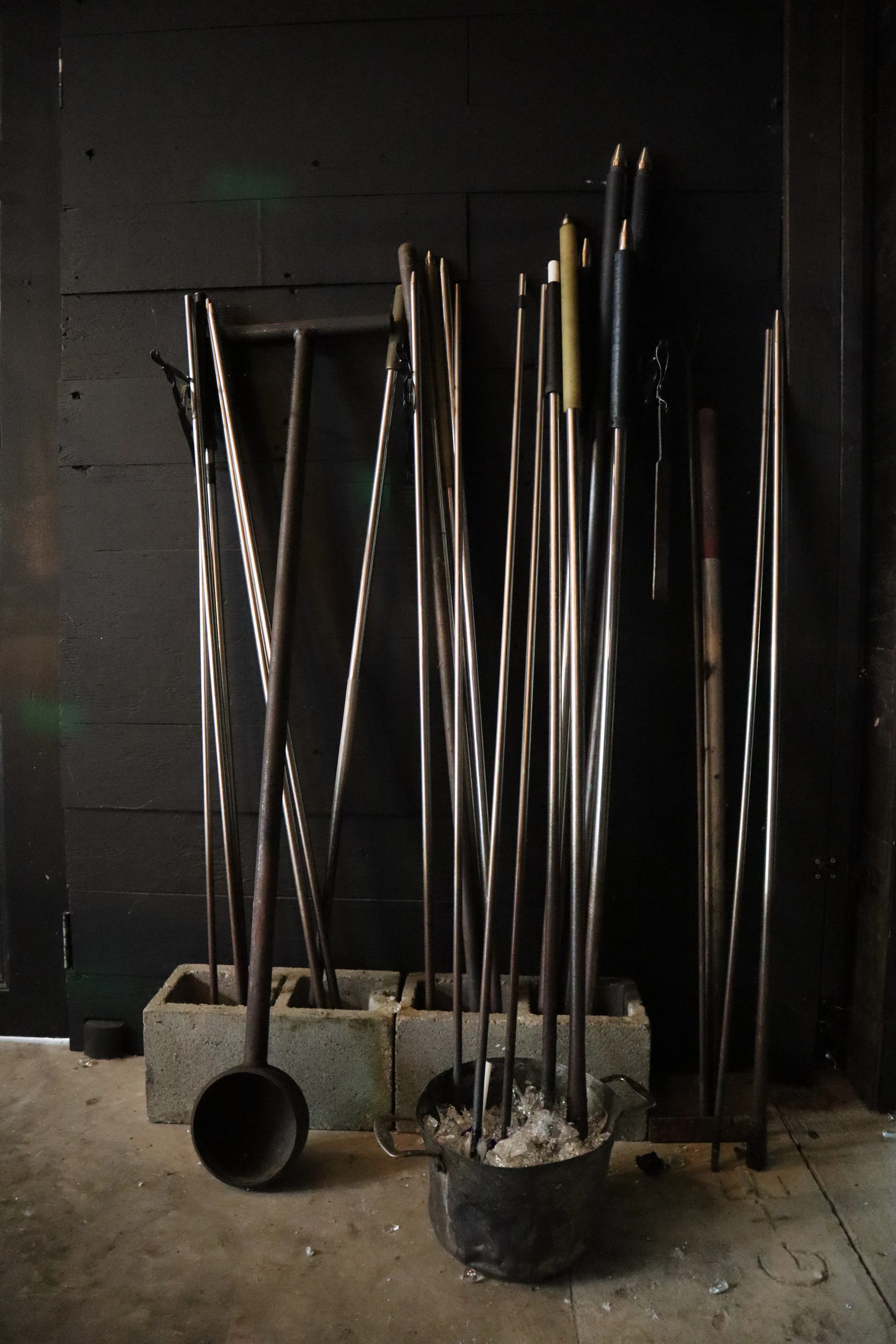
OUR STORY
Pushing the boundaries of glass art since 2007.
Garmezy Glass is a collaborative studio led by sculptors Grant and Erin Garmezy, whose work transforms molten glass into expressive, lifelike forms inspired by nature and myth. Grant creates dynamic animal sculptures in the hotshop, while Erin focuses on delicate botanical forms through torchworking. Together, they frequently combine their skills, producing intricate pieces that merge fauna and flora into unified, storytelling sculptures. Their practice balances technical mastery, narrative depth, and a shared dedication to pushing the limits of glass as a sculptural medium.

The Makers
Grant Garmezy is an acclaimed sculptor celebrated for his highly detailed, nature-inspired works rendered in molten glass. Trained in sculptural glassblowing, he creates pieces that balance technical rigor with narrative depth, transforming glass into dynamic, lifelike forms.
Raised on a farm outside Nashville, Tennessee, Garmezy grew up working with his hands and tending to animals. He developed a foundation in fine art through mentorships with an illustrator, a sculptor, and a coppersmith before pursuing formal training at Virginia Commonwealth University’s School of the Arts. Originally drawn to jewelry and small-scale metals, a chance encounter with a glass studio sparked a lifelong dedication to the medium, which he embraced for its sculptural possibilities.
Garmezy maintains a global presence, showcasing his work from New Zealand to Africa, with pieces held in collections in Bangkok, Barcelona, Cyprus, Dubai, the Hamptons, Paris, Tokyo, and Venice.
His creative reach extends to collaborations with Discovery+, Paramount, Marvel, and Universal Studios, and his social media platforms reach millions of followers monthly.
Erin Garmezy is a glass artist recognized for her delicate, lifelike botanical forms created through torchworking. Her fascination with glass began in the hotshop as a teenager, when she interned with Eric Kvarnes at the Oldway Art Center in Sperryville, Virginia. She quickly dedicated herself to the medium and went on to pursue it in higher education.
Garmezy earned dual BFAs in Craft/Material Studies and Art Education from VCUarts in 2007. Her work combines technical precision with organic realism, bringing plant-inspired forms to life through attentive observation of nature. She has taught workshops at institutions including the Chrysler Museum of Art, the Glass Furnace in Turkey, Aya Glass Studio in Japan, and Pilchuck Glass School.
Collaborating closely with her husband, she contributes to the studio’s sculptural works with delicate flame-worked glass pieces, bringing a nuanced sensitivity to texture and form. Her work has been featured on the cover of Glass Art Magazine, and she continues to expand the expressive potential of glass through teaching, collaboration, and independent studio practice.

The Studios
The Garmezy Glass hotshop is a rustic barn that the couple transformed into a working studio powered by fire, teamwork, and risk taking. Every piece begins here, where molten glass is shaped at temperatures exceeding 2,000 degrees.
The heart of the studio is a furnace that holds a pot of clear molten glass. A reheating chamber keeps each sculpture workable during the sculpting process, and annealers allow each sculpture to slowly and safely cool to room temperature.
A wide range of tools help shape the form including wet newspaper, blades, shears, tweezers, texture tools, and corks. An essential part of the process is the oxygen-propane hand torch, producing a flame that reaches nearly 5,000 degrees to refine and finesse fine details.
What we do here is known as hot sculpting or offhand sculpting, a method that requires no molds, only instinct, coordination, and years of technical mastery. Each sculpture is shaped entirely by hand. No two are ever alike.
Larger works demand collaboration. Most pieces are created by a skilled team working in unison, responding to the material in real time. It’s a demanding process, equal parts choreography and craftsmanship. The result is a singular piece of glass art that can never be replicated.






